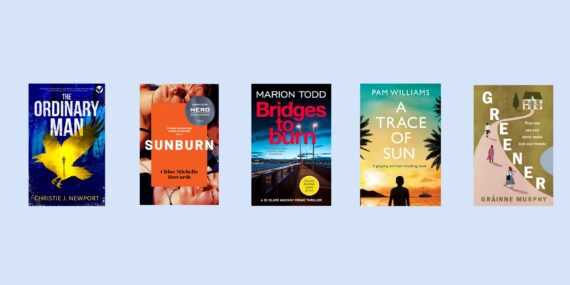
Fiction & Drama
New Northbank fiction in 2024
04/01/2024

When editors talk about what they’re looking to acquire at the moment what that really means is what they’re looking to publish in a year or eighteen months’ time. Occasionally books get published more quickly than that but, as publishers fill up their schedules at least a year in advance, they always have to be looking ahead to what the next trend will be and what people will want to read. Tricky stuff as none of us has a crystal ball!
In terms of what editors want to acquire now, I would say that, first and foremost, it’s fresh, original voices – writers who, whether it’s through style or theme, are bringing something new to the table.
Editors, like readers, want to be gripped by great writing, storytelling and emotion, and to feel as though they’re discovering or learning something new.
Who wants to read something they feel as though they’ve read before? No one. And, although a certain amount of familiarity is comforting, I think that, ultimately, fiction publishers want to find something really different and new as that will give that novel the best chance of standing out in a crowded market. So many books are published every week so originality is key but it’s tough – you want your novel to stand out for the right reasons.
Fiction is escapism, it’s entertainment, but there’s definitely been a shift recently in what fiction publishers have been acquiring in terms of fiction being that bit closer to reality. Novels written in response to worldwide movements, such as #metoo, and which highlight issues in the media (such as rape, abuse, male domination in the workplace, the gender pay gap, to name but a few) through their story are hot right now as are novels which present a speculative or dystopian view of the future through women’s eyes (some of the ‘hot’ London Book Fair books this year were set in worlds where there were only women or where women could only speak a limited number of words per day). Cleverly, some new writers are using today’s burning topics as a basis for their fiction, and are able to make a point about women in society along the way, giving their novel reading group potential (always a good route to bestsellerdom!).
Editors want to find diverse voices in fiction – not just novels by writers from different ethnic or religious backgrounds, but novels set in new and interesting places, featuring characters we haven’t seen before. Novels which bring interesting issues to the forefront, such as mental health, are enjoying success now as readers are able to believe in or relate to those characters as they’re not picture-perfect. The most successful debut of the past few years (after Fifty Shades of Grey) has been Elinor Oliphant is Completely Fine by Gail Honeyman – a novel which, while pitched as a feel-good story, is actually quite a dark and bleak tale of a damaged heroine with lots of issues, but readers love it because Elinor is a different, more real, more messed-up character than you usually find in women’s fiction. She’s not everyone’s cup of tea but she feels fresh and new, and like someone we haven’t met before in literature – that’s what fiction publishers want.
Having said all of this about publishers wanting to find new, diverse and underrepresented voices, at the end of the day, they still need to publish what they know sells and that’s genre fiction – commercial women’s fiction, historical fiction, saga, crime and thriller, science fiction and fantasy, young adult, children’s etc. Books that slot into category often achieve commercial success as, to a certain degree, readers like to buy more of what they know and enjoy. With that in mind, the best fiction publishers are also looking to acquire more genre fiction to fit in with what they already publish. It just has to have some point of difference.
–
By Kate Burke